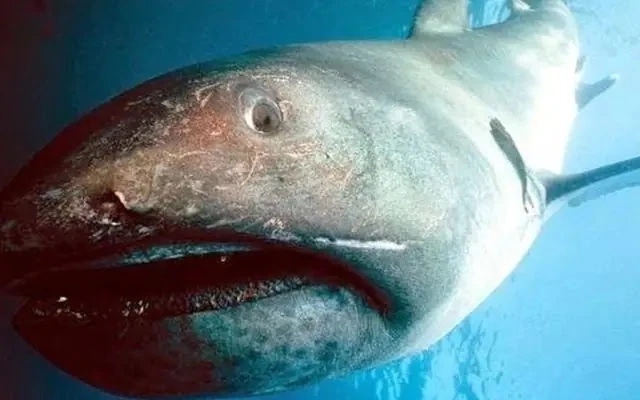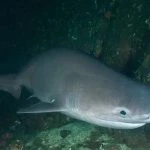The deep sea is home to a vast array of fascinating and mysterious creatures, including some of the most impressive sharks in the world. These creatures are perfectly adapted to the extreme environment of the deep ocean, and many of them are rarely seen by humans. In this article, we will explore the top 10 Deep Sea Sharks and learn about their unique characteristics and adaptations.
1. Goblin Shark
The goblin shark is one of the most unusual and unique sharks in the world, with its distinctive long, protruding snout and sharp teeth. It is a deep-sea shark that is rarely seen by humans, and little is known about its behavior and biology. The goblin shark has a pinkish-gray coloration and a soft, flabby body that allows it to navigate the deep ocean with ease.
2. Frilled Shark
The frilled shark is a bizarre-looking deep sea creature that is sometimes referred to as a "living fossil" due to its primitive appearance. It has a long, slender body and a distinctive frill of gill slits along its neck. The frilled shark is a slow swimmer that hunts for prey in the deep sea, using its long, needle-like teeth to catch fish and squid.
3. Sleeper Shark
The sleeper shark is a large, slow-moving deep-sea shark that is found in cold waters around the world. It is named for its habit of lying motionless on the ocean floor, waiting for prey to come to it. The sleeper shark has a broad, flattened head and a thick, muscular body that allows it to easily crush the shells of its prey.
4. Lantern Shark
The lantern shark is a small, bioluminescent deep-sea shark that is found in the Atlantic, Pacific, and Indian Oceans. It has a unique ability to produce its own light using specialized cells called photophores, which it uses to attract prey and communicate with other sharks. The lantern shark is a fast swimmer that feeds on small fish and squid.
5. Cookiecutter Shark
The cookie-cutter shark is a small, deep-sea shark that is named for the circular wounds it leaves on its prey. It has a distinctive, suction-cup-like mouth that it uses to latch onto its prey, before twisting its body and removing a circular piece of flesh. The cookie-cutter shark is an opportunistic feeder that targets a wide range of prey, including larger fish, dolphins, and even whales.
6. Megamouth Shark
The megamouth shark is a large, deep-sea shark that was only discovered in 1976. It is named for its massive, gaping mouth, which it uses to filter plankton from the water. The megamouth shark is a slow swimmer that is rarely seen by humans, and little is known about its behavior and biology.
7. Goblin Shark
The gulper shark, also known as the umbrella shark, is a deep-sea shark that is found in waters around the world. It has a distinctive, wide mouth that it uses to swallow prey whole and a long, slender body that allows it to navigate the deep ocean with ease. The gulper shark is an opportunistic feeder that targets a wide range of prey, including squid and other small fish.
8. Sixgill Shark
The sixgill shark is a large, deep-sea shark that is found in waters around the world. It has six-gill slits, which is unusual for a shark, and a broad, flattened head that allows it to easily navigate the deep ocean. The sixgill shark is an apex predator that feeds on a wide range of prey, including fish, squid, and other sharks.
9. Bluntnose Sixgill Shark
The bluntnose sixgill shark is a large, deep-sea shark that can grow up to 16 feet in length. It has a distinctive blunt snout and six-gill slits, which is unusual for a shark. The bluntnose sixgill shark is an apex predator that feeds on a wide range of prey, including fish, squid, and other sharks.
10. Pacific Sleeper Shark
The Pacific sleeper shark is a slow-moving deep-sea shark that is found in cold waters of the Pacific Ocean. It has a long, slender body and a broad head that allows it to easily crush the shells of its prey. The Pacific sleeper shark is an opportunistic feeder that targets a variety of prey, including fish, squid, and crustaceans.




